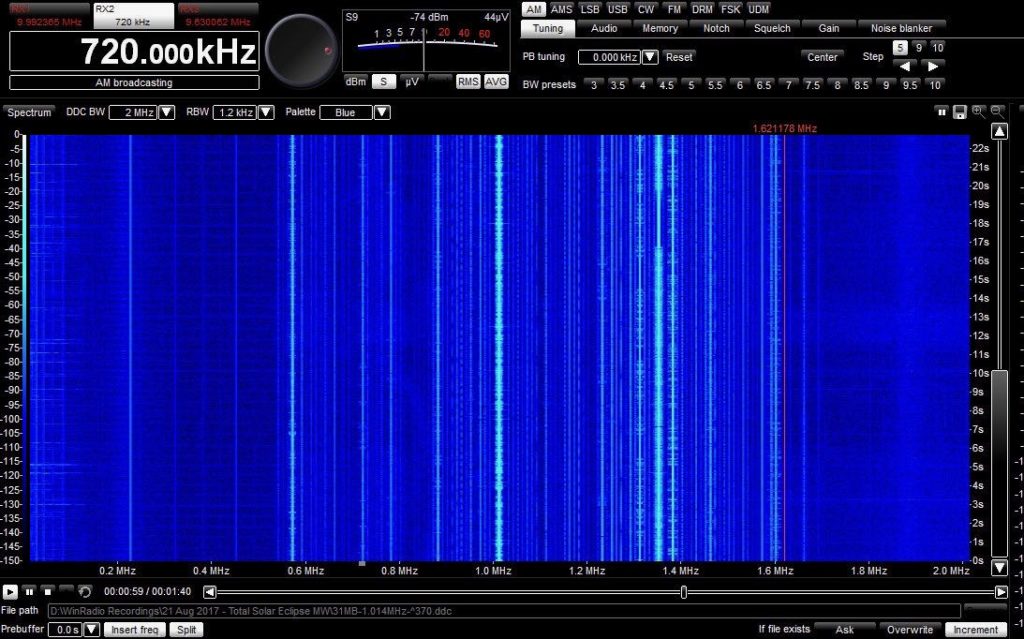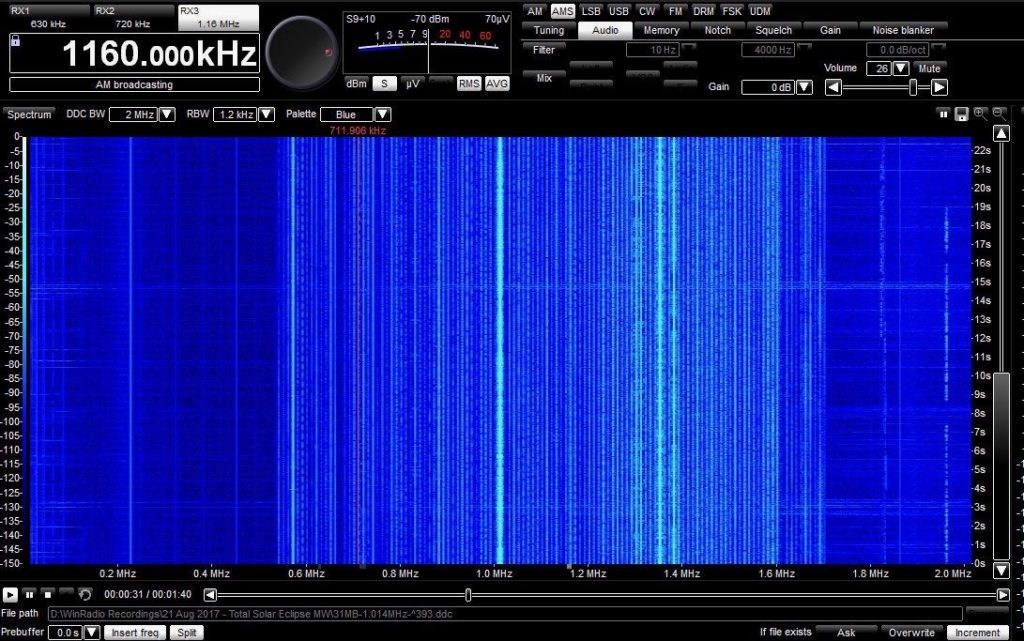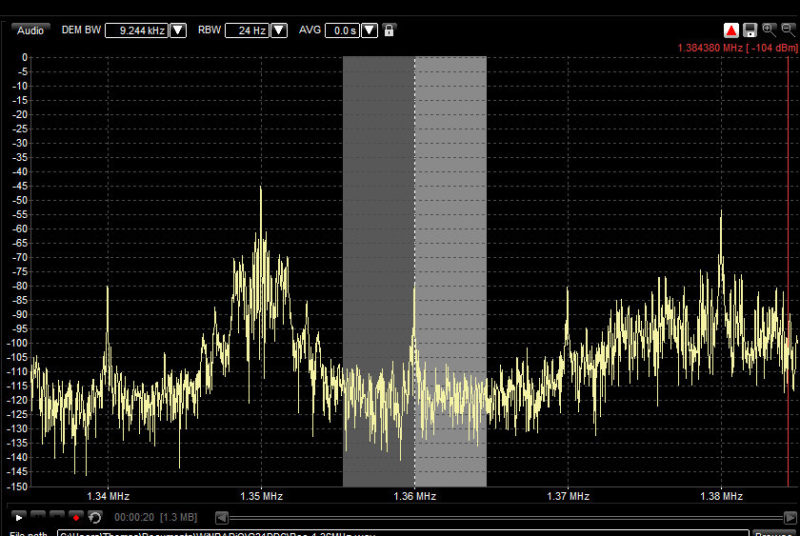Many thanks to SWLing Post contributor, Ivan Cholakov (NO2CW), who writes:
If you ever loved AM radio you will love this.
Thank you WNAH for recognizing there’s more to radio than plugging into a programming network and walking away!
Click here to view on YouTube.
Very cool! Many thanks, Ivan!
As I mentioned in a previous post, I recorded the entire mediumwave (AM broadcast) band from my North Carolina home with a WinRadio Excalibur on August 21 (day of the eclipse). After receiving Ivan’s message last night, I played back my recording and moved the time forward to around the moment of totality.
The mediumwave band was hopping! Several stations were competing for 1360 kHz with eclipse-enhanced propagation. There were two large signals flanking 1360 as well.
I thought I would never hear WNAH, but as I listened, their ID in CW (Morse Code) popped out of the signal mix. Here’s a short recording of the first station ID I received around 2:26 PM EDT (1826 UTC):
Click here to download the audio.
True: this is rough audio, but it always amazes me how CW can so effectively punch through noise. Nice touch, WNAH!
WNAH’s signal strength increased with time, but so did the competing signals on 1360 kHz. Within 10 minutes, about the time of totality in western North Carolina, WNAH was 40% stronger.
I did submit my recording and notes to WNAH last night.
Due to my schedule, I haven’t had any meaningful time to go over my eclipse spectrum recordings. Indeed, I think I’ll need several dedicated days to review them. While searching for WNAH’s signal, I could see a significant difference in propagation on the waterfall display within a 26 minute span of time:
14:15 EDT
 14:41 EDT
14:41 EDT
Note that local time of totality was 14:36 EDT.
I made spectrum recordings spanning 0-2 MHz, 6-8 MHz and 13.5-15 MHz.
Post readers: Did anyone else log WNAH? Log any other shortwave or mediumwave DX? Please comment!


I don’t have anything to monitor the entire band, however, in Bunnell, FL, near local eclipse peak I did manage to get good copy of WNCT 1070 AM. I used a Panasonic RF 1150 and a selectantenna. I expected far more but was disappointed here outside the WNZF 1550 studios.
This of course was only audio Morse Code. Had this been true razor sharp CW modulation, 1 kW of it would have been a punch!
.But then they would have been operating illegally.
Thanks WNAH!!!
I monitored 1070 kHz during the eclipse here in Kensington, MD. Normally in summer daylight I am able to hear only a faint signal from the travelers advisory network station 10 miles or so from my QTH. And this was the case on the day of the eclipse as well.
Shortly after 2:30 p.m. EDT 1070 came alive with a number of relatively weak signals. Signals increased in strength over the next twenty minutes, but I wasn’t able to ID any of them. At about 2:55 p.m. WNCT in Greenville, NC became dominant. They were the only station I was able to ID.
Shortly after 3 p.m. conditions returned to normal summer daytime levels.
CW always gets through 🙂
I checked my Perseus recording and managed to hear the code ID right at totality here (1838 UTC) then twice more in the next 2-3 minutes after that. After that, it was gone. I assume they were running 1kW listed day power. New station here, thanks for the heads-up on this!
Excellent! Brett: shoot them an email with your report and they’ll issue a QSL. Use this email address: [email protected]
Just shot them a report – thanks!
Just got a response from Hoyt Carter at the station; they are making up QSL’s now (apparently they didn’t expect anyone to respond) and promise to send them out.
QSL card and letter received today
Same here!
And me too! 🙂
Congratulations!! Nice catch there in NC. Yes. I was in Madisonville, TN watching the eclipse and recording on a Perseus. I haven’t reviewed all the recordings yet of course, but I did get a little bit of the CW from WNAH at 1830 and 1858 UTC.